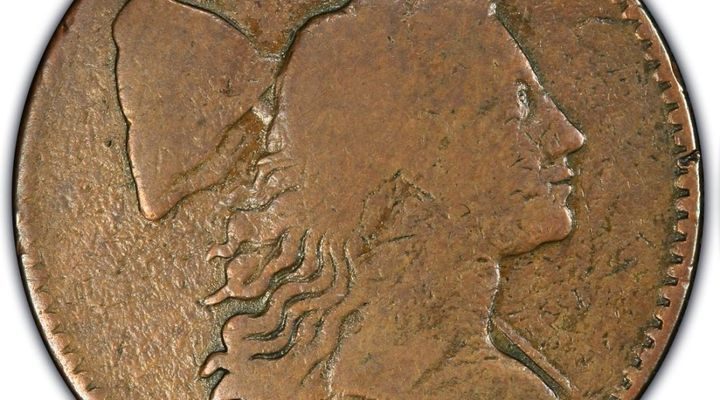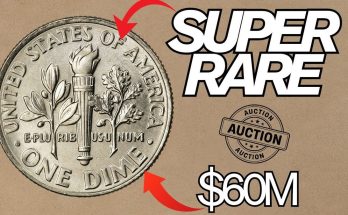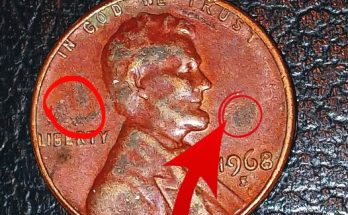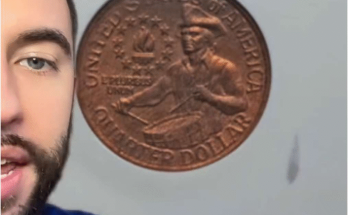“Dateless Buffalo Nickels – How Much Is An Indian Head Nickel With No Date Worth (See Why No-Date Buffalo Nickels Exist & How To Find The Date),” introduces one of the most common and intriguing phenomena in American numismatics. The photograph, which likely shows a heavily circulated five-cent coin, is a testament to the coin’s historical journey and a symbol of its inherent design flaw: the vanishing date.
The Coin and Its Design Flaw
The coin in question is the Buffalo Nickel, officially known as the Indian Head Nickel, which was minted by the U.S. from 1913 to 1938. Designed by sculptor James Earle Fraser, the coin features a dignified Native American chief on the obverse (front) and an American bison (often called a “buffalo”) on the reverse (back). This classic imagery, evocative of the American West, has made it one of the most beloved 20th-century U.S. coins.
However, the coin’s artistic merit came with a severe practical drawback: the date was placed on a raised section of the obverse, right on the shoulder of the Native American figure. This position was one of the first areas to wear away during the decades of heavy circulation the coins endured in commerce. Consequently, it is extremely common to find a Buffalo Nickel where the four digits of the minting year are completely gone, leaving it “dateless”.
Why Dateless Nickels Exist
Every dateless Buffalo Nickel was an authentic coin that once displayed a visible date. The missing numbers are not a mint error, but rather the natural, mechanical result of heavy wear from being handled, rubbed, and bumped in pockets and cash drawers.
- Vulnerable Placement: The date was positioned in a high-relief area, making the numerals susceptible to being rubbed off during circulation.
- Design Execution: Some historical accounts suggest that the execution of Fraser’s design by Chief Engraver Charles Barber may have contributed to the date’s poor wear resistance.
- Heavy Circulation: As a low-denomination coin containing no precious metals, the nickel remained in active circulation for decades, accelerating the wear on its most vulnerable features.
This issue was so widespread that by the 1950s, many Buffalo Nickels minted in the 1910s and 1920s already had unreadable dates.
Determining the Value of a Dateless Coin
While the lack of a date means these coins are not inherently rare or key dates, dateless Buffalo Nickels still hold value as affordable collectibles.
- Typical Value: Most dateless Buffalo Nickels are not highly valuable, generally selling for less than a dollar, with many fetching between $0.06 and $0.20 each, depending on their condition. They are often sold in bulk lots for starting or building a collection.
- Factors That Increase Value: A dateless coin might command a higher premium if it is in excellent overall condition, or if it features a rare and valuable error that is still visible. Collectors should check for other identifying markers, such as a mint mark (“D” for Denver or “S” for San Francisco) on the reverse, beneath the denomination, though these can also be worn away.
How to Find the Hidden Date: The ‘Acid Dating’ Method
The question of “How to Find the Date” points directly to a popular but controversial practice in the numismatic community: chemical restoration, often called “acid dating”.
This technique involves applying a mild acid solution (such as a commercial product like Nic-A-Date, or sometimes even household vinegar) to the worn area. The acid reacts with the metal on the coin’s surface. Because the date area was work-hardened by the tremendous pressure of the minting process, it is slightly more resistant to the acid than the surrounding field. This difference in resistance can chemically etch the surface, temporarily revealing the faint outline of the date.
Crucial Warning: Professional numismatists almost universally agree that acid dating a coin permanently damages it, resulting in discoloration and surface alteration. It nearly always eliminates most of the coin’s numismatic value. This process is only recommended for hobbyists who wish to satisfy their curiosity about a low-value coin, as the restored date may even vanish again within a year or two. For any coin that could potentially be a key date, professional conservation is recommended, or the coin should be left as-is.
Ultimately, the dateless Buffalo Nickel remains a fascinating piece of currency history, a physical artifact that shows the wear and tear of its 25-year lifespan in the American economy. Its eroded surface tells a story of commerce and time, even if the year it began that journey has been lost to circulation.



